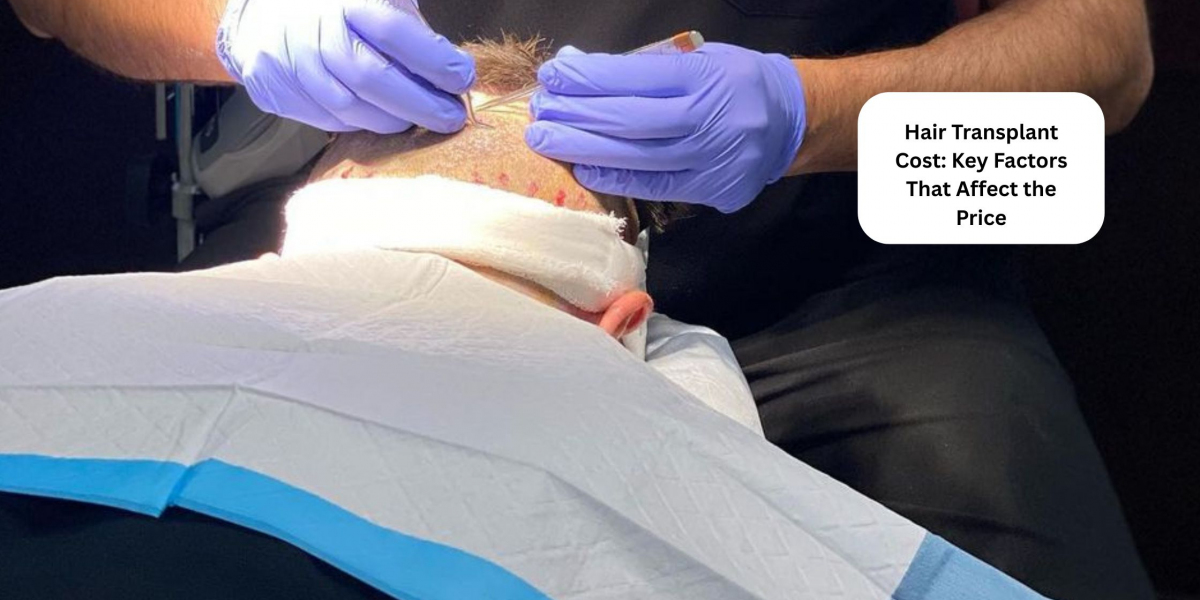Hair loss can significantly impact confidence and self-image, leading many people to explore permanent solutions, such as hair transplants. But one of the most common concerns patients have is the price of hair transplantation. The price can vary widely depending on several crucial factors. By understanding these characteristics, you can make informed decisions and avoid unexpected costs. In this article, we break down the key elements that influence the price of hair transplantation, enabling you to plan your journey with clarity and confidence.
Type of Hair Transplant Technique
The first factor that directly impacts the price of hair transplantation is the method used. There are two primary techniques:
- FUT involves removing a stripe of scalp from the back of the head, extracting follicular units, and transplanting them to the thinning areas. FUT is typically more affordable because it takes less time and effort to perform. However, it may leave a linear scar and require a longer recovery period.
- FUE is a highly advanced technique that is minimally invasive & offers a quicker recovery time. It involves harvesting individual hair follicles directly from the donor area. While it provides minimal scarring and faster healing, the process is time-consuming and requires advanced tools, which raises the price of hair transplantation. If you are looking for a less invasive option with natural-looking results, FUE is often a worthwhile investment.
Area of Hair Loss
The extent of your hair loss is a major aspect that directly influences the overall cost of the procedure. The larger the bald or thinning area, the more grafts are needed to achieve natural-looking coverage. For example, someone with early-stage hair thinning might only need 1,000 grafts, while someone with advanced baldness could require 3,000 or more. Since most clinics charge per graft, the price of hair transplantation increases in proportion to the number of grafts.
Health and Scalp Condition
Your general health and the condition of your scalp also play a role in determining the complexity—and therefore the cost—of the procedure.
- If you have medical conditions such as diabetes, autoimmune disorders, or scalp infections, the procedure may require extra precautions, specialized consultations, or additional medications, which can raise the overall cost.
- A healthy scalp allows for easier extraction and implantation of grafts. However, patients with scarring, skin conditions (such as psoriasis), or sensitive skin may require special care or treatment before and after the transplant, which can increase the cost of hair transplantation.
Hair Characteristics
The texture, thickness & colour of your hair can also affect how the transplant is performed—and how much it costs.
- Coarse or curly hair often provides better coverage per graft, meaning fewer grafts might be needed to achieve the desired result.
- On the other hand, thin or fine hair might require more grafts to achieve the same level of coverage.
- Hair colour contrast between the hair and scalp (e.g., dark hair on light skin) can make thinning more visible, which may require denser grafting to conceal bald spots, increasing the overall cost.
These characteristics can make the surgery either simpler or more technically challenging, which will reflect in the final price of hair transplantation.
Technology and Equipment Used
The tools and technology used during the procedure also affect pricing. Clinics that utilise cutting-edge systems that offer greater precision, shorter recovery times, and better outcomes. However, these advanced methods increase the price of hair transplantation. If your goal is long-term success and natural aesthetics, it’s worth investing in a clinic that uses the latest technology.
Financing and Payment Options
Numerous reputable clinics offer flexible financing options and payment plans, making hair transplant procedures more affordable & manageable for a wider range of patients. Before signing up, ensure you understand the interest rates and total repayment cost. Financing doesn’t reduce the actual price of hair transplantation, but it can help you manage the expense over time.
Conclusion
The price of hair transplantation is not a one-size-fits-all number. It depends on various factors, including the technique used, the number of grafts needed, and the complexity of your individual case. While you may be tempted to opt for the cheapest option, remember that quality, safety, and long-term satisfaction are what truly matter. If you're looking for trusted professionals who blend cutting-edge techniques with personalised care, we offer world-class services that prioritise natural results and patient satisfaction. Their team will help you understand your needs and provide transparent pricing so you can confidently take the next step toward hair restoration.














